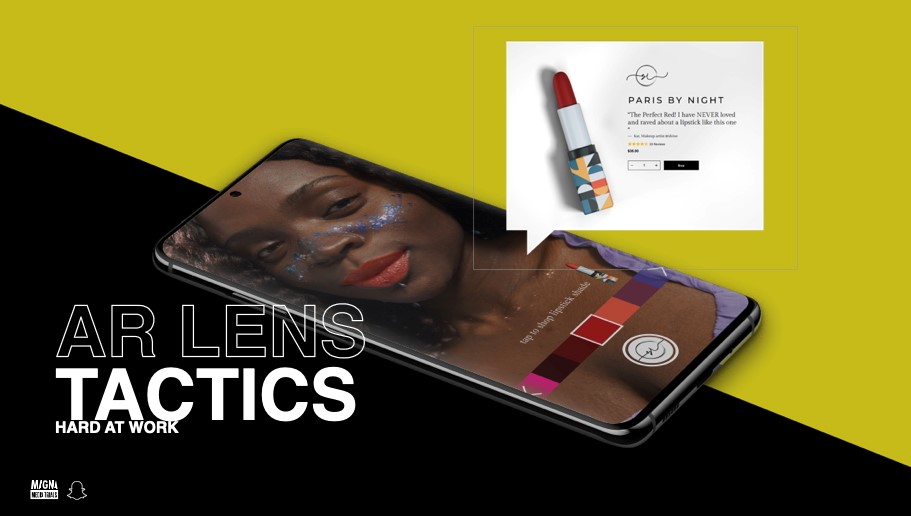By David Cohen, Published by Adweek
Respondents found them to be more informative and useful than pre-roll
Snap Inc. teamed up with the Magna Media Trials proprietary research offering from Magna on The Augmented Reality Playbook: Understanding the Role of AR in the Purchase Journey, a new study aimed at uncovering the true capabilities of augmented reality ads, such as Snapchat lenses, and understanding their role in the consumer purchase journey.
The two companies said research was derived from multiple brands in different verticals, including Lego and Levi’s, in five different markets: Australis, Canada, France, Saudi Arabia and the U.S.
Snapchat AR lenses that were tested included gamified entertainment lenses, front-facing lenses, interactive entertainment lenses, shoppable AR lenses and world facing lenses.

Findings by Snap and Magna Media Trials included:
- AR ads provide utility and help brands build deeper connections with consumers. Marketers should leverage this to differentiate their brand when it matters most. Consumers found AR ads to be 5% more informative and 6% more useful than traditional pre-roll ads, and AR ads made them feel closer to the brand 1.3 times more and got them excited about the brand 1.1 times more.
- AR ads play a unique role in each phase of the purchase journey. Marketers shouldn’t view AR as an add-on, but an always-on tool to build and amplify brand messages. They capture consumers’ attention for those early in the purchase journey. For those in the consideration process, AR ads shape brand opinions in a positive light, leading consumers to think of the brand as more up-to-date and differentiated when it matters most. Finally, for those ready to make a purchase decision, AR ads drive intent to take the next steps—bringing the brand top-of-mind, increasing brand favorability and actively searching for the brand.
- While AR can shape how consumers feel about brands, marketers should use different AR formats to achieve their desired outcomes. Shoppable AR lenses trigger consumers at the end of their journey to take the next step, driving search intent up 8%. Gamified entertainment AR lenses bring in a broader audience and differentiate consumers in the beginning of the purchase journey, driving search intent up 12%. And interactive entertainment AR lenses are found to boost memorability (by 9%) and brand perception3people in the middle of the journey see the brand as more innovative (9% more), and those in the end see it as unique (8% more). Meanwhile, the ability to interact with the product through world facing AR lenses, such as viewing furniture from the consumers living room, impacts those in the middle of the journey and results in higher purchase intent (8% more) and brand relevance (7% more). And front-facing lenses help lift brand image among those closer to purchase, with 5% lift in brand uniqueness and a 4% lift is relevancy.
- AR should be strategically positioned in campaign sequencing as part of consumer’s exposure to the brand on the platform. Brands benefit directly with higher purchase intent (6% more) and brand preference (6% more) when an AR ad is in the mix. Snap and Magna suggested placing AR in the middle of video, as the element of delight helps build brand perception.
Snap vice president of global agency partnerships Dave Roter said in a statement, “We have seen firsthand the value AR brings to the marketing mix, and specifically how Snapchat can contribute to full-funnel success, as we’ve been creating AR experiences for nearly a decade. AR provides an immersive experience for our advertisers, and these findings further demonstrate that AR offers a differentiated opportunity for brands to reach the right audiences, when it matters most, all while driving meaningful business for our customers.”
Magna executive vp, intelligence solutions Kara Manatt added, “AR has been around and has been tested in the marketplace, but there were still many questions regarding how and where AR could fit in the marketer’s toolbox. The research reveals that AR provides utility and informs consumers about the brand, above and beyond pre-roll video ads, while also enabling brands to build deeper, more personalized connections with consumers.”
Read the Full Study
